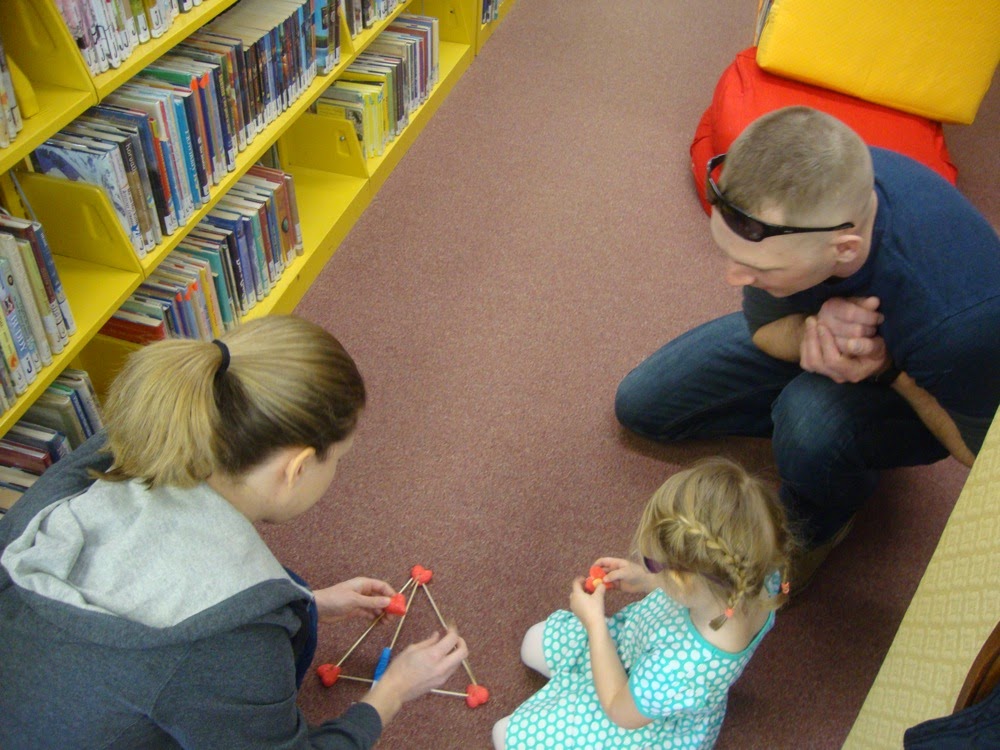 We put candy hearts in hot, cold, and warm water to see which would dissolve the candy the quickest. We cut and pulverized hearts to see if they would dissolve faster in warm water than whole hearts. We noticed that the letters on the hearts were the first to dissolve and that the warmer the water and the smaller the pieces, the faster the hearts would dissolve.
We put candy hearts in hot, cold, and warm water to see which would dissolve the candy the quickest. We cut and pulverized hearts to see if they would dissolve faster in warm water than whole hearts. We noticed that the letters on the hearts were the first to dissolve and that the warmer the water and the smaller the pieces, the faster the hearts would dissolve.Next we put tiny hearts in a big glass of seltzer water. At first, they just laid on the bottom of the glass while tiny bubbles moved up the sides of the glass to the top. But soon, the hearts began to shift and tumble at the bottom of the glass - and then they too rose to the surface! The hearts, even some big ones, kept rising and falling in the water as the carbonation caught the candy and moved it up, then released it as the bubbles around it popped.
We each drew a heart with a word in it on a balloon, then filled it with baking soda. We attached the balloon to a bottle half filled with vinegar, then tipped the balloon up so the baking soda would fall into the bottle. The balloon inflated from the carbon dioxide that occurred when the baking soda and vinegar mixed and foamed up. It was awesome!
Then we began to build catapults to shoot hearts into the air! Building supplies were skewers, marshmallow hearts, rubber bands, craft sticks, bottle caps and more. There were some creative catapults, with candy hearts sailing through the stacks of the Children's Room!
Everyone had cookies and got a small bag of heart candy to take home - for eating, or for more STEM fun!








































